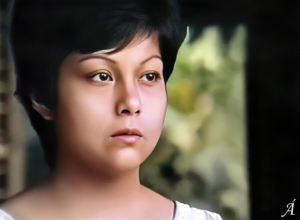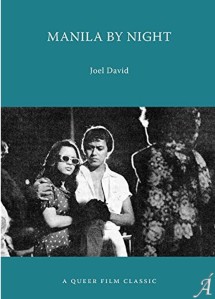THE PROBLEM OF OUR CRITICAL APPROACHES
[Click to go to the following sections: What Dreams Have Gone; Geneses; Refinements; Notes. Here are further links for the separately posted second of two parts as well as for the Appendix.]
You are so fortunate, a colleague from my long-ago activist past told me, that the debate over political ideals is now being conducted in terms of rival releases. Typically I neither assented nor demurred, since I didn’t know how to tease out the implications of the statement. For one thing, I wasn’t in the spaces where the conflicts were taking place – the cinemas of the urban capital, rather than in one or more of the streaming services available to overseas viewers. For another thing, I was familiar with the “canon” of anti-dictatorship texts, most of them films and books, with certain netizens bravely circulating links to digital files intended to showcase the most vital among the films that took a stance against the regime of Ferdinand Marcos (Sr.), some of them even while he was still in power. (A similar collection of PDFs has also been in circulation, and I enjoin readers who have the hard-drive space to download what they can, if only out of duty to liberal commitments, while taking care to continue reading.) Finally the national university’s film institute, which I was instrumental in founding, announced a number of simultaneous courses on film and martial law, which I imagine draw up screenings of works intended to highlight the most exemplary samples, possibly many of the same titles that appear in the aforementioned collection of links.
11011With the essential proviso that I have neither seen the twin battling films of the moment, nor glanced at any of the so-far unposted syllabi of the University of the Philippines Film Institute courses, I maintain that it would still be possible to draw up a critique of contemporary critical approaches to what we might term “martial-law cinema” in the Philippines. The critique necessarily has to begin with the institution that purports to provide guidance in endorsing supposedly appropriate methods for evaluating cinema: the UPFI itself, which was molded by personalities associated with the Filipino Film Critics Circle (hereafter FFCC), whose most senior member claimed critical credibility on the basis of belonging to a group that handed out incorruptible (in his words, non-purchasable) awards. This was apparently in response to a critique of Filipino film criticism that I published almost a decade ago, where I deplored the model proffered by the FFCC – a predictable series of evaluations predicated on the prospect of announcing nominees and winners on an annual basis, premised on the false assumption that a finalized organic work can be broken down and discussed according to discrete creative, histrionic, and technical elements.
11011To the FFCC’s credit, after sponsoring a UPFI “roundtable” held while I had to attend my overseas classes where my points were attacked without naming either me or the article I wrote, the group’s awards started exhibiting a concern for ideological discourse, which their elder members insisted on announcing especially during instances when their choices of winners raised more issues than they resolved. All that this served to do, however, was paper over the larger issue that I raised: that in so far as film criticism should be concerned, award-giving can only be a secondary concern at least, or at best should be of zero concern whatsoever. To make matters worse, the FFCC’s guiding lights appeared to take the cue from their supposedly most highly qualified member, who outlined a prescription for evaluating the worthiness of films. The best ones, he asserted, should deal explicitly with poverty while using high-art principles; works that refuse to eschew what he derided as mainstream aesthetics should be condemned as essentially reactionary.
One can and should date the source of these progressive-sounding notions. A Western school of Marxism refused the orthodox (Soviet) reduction of artworks and literature to the nature of the economic systems that generated them – which is to say, successful socialist works can only be produced in a socialist system. The positive contribution of this new school – which at one point did call itself New School – was to allow authors to operate within pre-socialist systems, following the orthodox teleology of capitalism eventually succumbing to socialism. You can imagine how such a rejection of orthodox prescriptions could induce guilt in Christianized (especially Catholicized) practitioners, including critics, despite the fact that they were finally permitted to indulge in pop-culture commentary. This is why this school insisted on upholding the “highest” aesthetic standards formulated by modernism, which was after all the ultimate goal of post-capital development. This is the reason why this school’s acolytes in the Philippines could think it only appropriate to select their most-awarded filmmaker as their youngest life-achievement winner; the reality that the mass audience (not just in the Philippines) will never be persuaded to attend the screening of black-and-white movies dominated by extremely long shots with running times reaching up to 11 hours didn’t seem to be an issue whatsoever with these trophy-givers.
11011Hence Filipino movie-goers can be occasionally interested in politicized discourses in films, as they are at the moment and as they had been in the past. But in the general course of film history, they will turn to whatever available fare of “reactionary” material happens to be on offer, whether these be sex, violence, toilet-humor comedy, feel-good fantasies, melodramas on the rich and powerful, regurgitations of the latest global film trend, and so on. Within this scenario, critics and professors will feel justified in their uppity disdain for mass culture and continue insisting on so-called progressive material infused with the exclusivist aesthetics that they presumably studied and assimilated, pointing to mass rejection as proof that they deserve to latch onto their institutional perks while they patiently seek to disseminate their ideals via awards, courses, books, articles, and reviews.
11011This would be the kind of scenario we should all settle for if there weren’t any other option available. But I would not be writing this if this were so. The failure of the UPFI/FFCC axis is in insistently overlooking the aforementioned option, actually a once-new though now long-established progressive tradition, for the sake of maintaining their claims to credibility, premised on handing out recognition to the practitioners they favor (and withholding the same to practitioners they wish to punish, but that’s an entire other can of worms). From this point it should be evident that a bit of overseas historical contextualizing will be necessary, and most of it was overlooked by Noypi progressives – mainly because it didn’t directly involve the then-flourishing socialist bloc and it bypassed the country’s neocolonial centers (specifically the US and Vatican State); its impact on Western film studies, though, was immediate and overwhelming and still persistent, but one would not be able to appreciate its prevalence if one remained ignorant of its origin.
The event that marked this turning point in Western film discourse was the May 1968 turmoil in Paris. It’s considered the closest instance that a Western country ever came to a Marxist revolution; the fact that it failed because of the Communist leadership’s capitulation became the starting point for reconsidering the principles and strategies behind socialist ideals, with the then-existent systems increasingly labeled as “orthodox” or “vulgar” in their misreadings and misappropriations of progressive thinkers starting with good old Karl. The full-scale collapse of this bloc around two decades later, in a series of mostly peaceful upheavals, led to a renewal of debates and expressions of mourning, with Communism returning to the spectral position that it had earlier assumed in The Communist Manifesto (1848).
11011Progressive cultural scholars did not look on helplessly during all this time; neither were they content to rely on prescriptions that preceded May 1968 (which groups like the FFCC apparently regard as sufficient for their purposes). The male critics who advocated for a dubious filmic revolution, who converged in the early editions of Cahiers du Cinéma, had moved on to flourishing careers as the guiding lights of the French New Wave. If you want to look into the aspiration of film institutions, including the UPFI, to train young people to become film critics who could later succeed as directors, it all derives from an attempt to replicate a cultural phenomenon that should have occurred only once, in a developed society primed for this kind of intervention, with standard film language still straining to break free of Classical Hollywood strictures. To see it being reconfigured as a model worthy of emulation in cultural contexts far removed from Cold War tensions and late-European modernity, is to find parodic elements emerging in the mix; to insist that it can be productively applied to a postcolonial culture necessarily positioned against Euro-American traditions, is to find parody slipping into pathos.
11011By the time the late 1960s rolled around, the original French New-Wave batch was sufficiently ensconced in their country’s film establishment while a new generation of Cahiers critics, politicized yet wary of a wholesale rejection of historical lessons, found its approaches challenged by a more trad-left publication, Cinéthique. In late 1969, Cahiers published its groundbreaking editorial titled “Cinema/Ideology/Criticism,” initially a short dozen pages that ventured to explain its stance toward what constituted films that were worthy of critical attention (a translated copy of which is uploaded here). The article listed seven categories under which films may be classified, with the first three describing the types of films that may be regarded without reservation. The first category, comprising films that should be dismissed (though see my later qualifier), would be works that “are imbued through and through with the dominant ideology in pure and unadulterated form, and give no indication that their makers were even aware of the fact.” Significantly, this covers the majority of productions, “even those whose discourse is explicitly political” (another category covers this seeming contradiction more definitively). The next two categories, comprising works that the publication welcomed as its objects of study, would be “those [films] which attack their ideological assimilation … by direct political action, on the level of the ‘signified,’ … [and by formal innovation, when they] challenge the concept of ‘depiction’ and mark a break with the tradition embodying it” in one category; and in another, those films which operate like the second case, “whose content is not explicitly political, but in some way becomes so through the criticism practiced on it through its form.”
11011With this enumeration of categories, the editorial authors, Jean-Luc Comolli and Paul Narboni, not only signalled their acceptance of long-standing progressive ideals in aesthetic evaluation; they also engaged in what was even then a problematic reduction of a collaborative product into elements that could be more clearly distinguished before the entire process of production has been completed. The separation of content from form could prove tricky enough in the fine arts and literature, as anyone who attempts to compare, say, a ratty volume of a Sergei Eisenstein collection on stained newsprint with barely stable binding, with one of the FFCC’s ultra-elegant and generously illustrated coffee-table anthologies, will presently realize. One ought to cost more than the other, but then the FFCC’s, may we say, uncritical acquiescence to the values of (among other things) bourgeois comfort, Western institutional validation, and ideological stagnation – should no longer render surprising their conviction that their decisions are beyond assailment. I would pay more for the Eisenstein, and so should you, but we may have to wait for too long before an FFCC anthology sells at the price it deserves to be pegged at.
The last two items listed by Comolli and Narboni concern a larger category of a once-flourishing venture called cinéma direct (actually a specialized approach to documentary film practice), so we may mention them next for representing just as small a proportion of output as the favored initial categories. The first, more typical sample would be those that “suffer under the primary and fundamental illusion that if they once break off the ideological filter of narrative traditions … reality will then yield itself up in its true form,” a flawed assumption since “reality holds within itself no hidden kernel of self-understanding, of theory, of truth,” where “ideology goes on display to prevent itself from being shown up for what it really is, contemplates itself but does not criticize itself.” In the second type of “‘live cinema,’ [the] director is not satisfied with the idea of the camera ‘seeing through appearances,’ but attacks the basic problem of depiction by giving an active role to the concrete stuff of his film, [thus making it] productive of meaning and not just a passive receptacle for meaning produced outside it (in the ideology).” The final category, per the authors, deserves the same treatment as the second and third groups mentioned previously, where evaluators are tasked to demonstrate “how the films operate critically on the level of signified and signifiers” – or in so many words, how they succeed as progressive texts.
11011In the case of Philippine films, overt political discourse is extremely rare since an atmosphere of a special type of real-life anxiety (most obviously, political campaigns) first has to be fostered in order to convince viewers to attend to works that purport to deal with provisory issues, just as other films get produced according to certain pop-culture markers: sports or beauty-contest victories, dramatic (preferably bloody) combat stories, rags-to-riches narratives, lurid sex crimes, bedroom-to-boardroom scandals of the rich and powerful, and so on. Hence one has to be prepared to accept a certain degree of awkward, sometimes inadequate technical competence if one were to scout for passable samples, with critical responses sometimes on the mark, more often way off. From the First Golden Age of the 1950s studio system, Gregorio Fernandez’s Malvarosa (1958) presents a large impoverished family, frontlined by their youngest daughter, struggling against a callous and indomitable patriarchal system, while the post-studio system’s Sa Atin ang Daigdig (dir. Cesar J. Amigo, 1965) reworks a similar situation of a poor woman confronting challenges to her social mobility using the unexpected framework of a romantic comedy.
11011The martial-law period (1972-86) of Ferdinand E. Marcos ironically led to a flowering of filmic expressions, primarily because the dictatorship regarded cinema as an ideal showcase for its claims to benevolence, with the country’s artists concomitantly finding in the medium an opportunity to practice their respective professions while being able to earn a decent living. Before Lino Brocka or Ishmael Bernal came up with genuinely progressive texts using Cahiers du Cinéma’s prescription of transforming form alongside content (which, to be clear, Brocka’s 1975 Maynila: Sa mga Kuko ng Liwanag fails on several levels at attempting), Celso Ad. Castillo stepped up with Daluyong at Habagat in 1976, and Elwood Perez countered the next year with Masikip, Maluwang: Paraisong Parisukat (alongside Castillo’s far-less-vital Burlesk Queen). Perez’s work was resolutely ignored by most local observers, while Daluyong at Habagat was bafflingly excoriated by both conservative and progressive members of the FFCC.[1] As a result, several of the aforementioned films, except for Malvarosa and Maynila, are either extremely rare or lost.
11011What tends to trip up local evaluators is the relationship of progressive film discourse with genre. The FFCC and its ilk adheres to a Marxian prescription tethered to the mid-20th-century celebration of the revolutionization of film technique via the innovations introduced by the French New Wave and its aftermath. From the perspective of US-dominated global distribution, these products were initially arthouse material, particularly in contexts (including the US’s) that required specialized handling, including exemptions from censorship. The keyword here is “initially”: once any innovation becomes viable in the sense of being both affordable and profitable, it inevitably gets cannibalized and plugged into a system of blanket commodification. What was posited as the challenge to the hegemony of Classical Hollywood posed by the transmogrification of New-Wave principles to a just-as-hegemonic European art cinema (unfortunately accepted as a progressive standard by an over-eager but surprisingly inadequately prepared Gilles Deleuze in his Cinema books) eventually devolved into a generic formularization that can be deduced from the Brocka “triumphs” at Cannes Film Festival: observant of Classical Hollywood narrative unities, tackling realist subject matter reflective of the country’s Third-World condition, with a nihilistic or defeatist resolution that signals the decadence and/or desperation that a neocolonial dictatorship levies on its population.
11011The reduction of Euro art-film practice to increasingly remunerative generic practice should not be surprising to long-term observers of global film trends. But rather than point out how deplorable this way of all flesh, or celluloid, has turned out, I prefer to point back to the remaining categories in the Cahiers editorial, after this admittedly subjective recollection of what our progressive-film achievements have been. What should not surprise us is how the filmmakers under discussion regarded it as their prerogative to deploy whatever genre happened to lend itself to commercial exploitation at their specific moment of production. The question of worthiness among genres has of course been a constant stumbling block in narrative criticism, preceding film analyses by several centuries of literary practice. Even Comolli and Narboni were experienced enough to describe the “ideological filter” of narrative in no uncertain terms as “not the most important one.”[2]
11011Not surprisingly, it would take Brocka’s breakaway from his Cannes contacts for him to embark on what was an auspicious start in progressive film production, with his multigeneric metatextual Gumapang Ka sa Lusak (1990). Certain gestures toward this achievement were made earlier, in Gregorio Fernandez’s trailblazing Hukom Roldan (1957) as well as Mike de Leon’s shift from metaphorical treatments to the more openly (though timidly) metonymic Sister Stella L. (1984). Prior to these achievements by the country’s globally recognized auteurs, Bernal carved out a vigorous social critique while developing a distinctly homegrown genre, the multicharacter film format, with two films that should more properly be regarded as an originator text and its sequel: Aliw (1979) and Manila by Night (1980).[3] Further studies will need to be done to answer the question of why such a productive individual was never able to attain the several future peaks that these mid-career concoctions promised. Meanwhile we need to move on to the crux of our argument on Philippine political cinema, proceeding from the rest of the categories brought up in the Cahiers editorial.
Notes
Acknowledgments and list of works cited appear in the Notes section of the second (concluding) part of this article.
[1] The deeply weird reversals of fortune of Celso Ad. Castillo’s standing with the critics’ group will require more intensive research into the dynamics of the organization. All I can attempt for now is a sketch of the occurrences and the possible reasons that lay behind them, based on one observable premise and another speculative one. The group, despite its claim, has been unable to resist its preference for personalities associated with a geopolitical designation that we may provisionally, though admittedly not entirely accurately, call Dilimanian – i.e., nominees associated with the primary scholastic consortium comprising the national university, Ateneo de Manila, and De La Salle (in decreasing order of preference), as well as their non-Manila campuses, will have a stronger chance of winning their annual competitions. Castillo, Elwood Perez, and a long list of other talents, on the other hand, hail from the University Belt of Manila, if not elsewhere.
11011The other, more regrettable, form of discrimination can only be inferred circumstantially. The year the group was founded and Castillo released Daluyong at Habagat, a national university member had a similarly overtly political entry, Sakada. D&H tackled labor unrest but set itself in a past era, while Sakada’s depiction of rural troubles was more identifiably contemporary (though ideologically problematic and occasionally risible in execution). Said faculty filmmaker was supposed to have resigned, in observance of a rule that industry figures should no longer participate in award-giving activities. During the next year’s deliberations, where Castillo’s Burlesk Queen was far and away the strongest entry, he attended meetings to openly denounce the film using words never heard before or since in such gatherings, resulting in zero wins for BQ – a turnout that caught media observers by surprise.
11011The next year, with an overly romanticized epic on peasant rebellion, Castillo finally managed to score his first and only critics’ prize. Although this third entry, like the earlier two, was period in scope, the critics’ reviews interpreted it as if it were still an ongoing contemporary concern (which, as in the previous films’ instances, it was). My reading of these developments, pending plausible confirmation or repudiation by expert observers, is that the members’ Dilimanian parochialism was compounded by political partisanship: the erstwhile revolutionaries referenced in Castillo’s material would have been affiliated with the pro-Soviet Communist party, whose leadership (much like France’s) had unilaterally capitulated to the government’s inducements to surrender, in exchange for estates in Mindanao. Nevertheless Castillo’s cinematic treatments never wavered in upholding his rebel characters’ opposition to the establishment. Only with the addition of members more inclined to acknowledge his talent and daring was he able to finally win favor with the organization.
[2] See Barbara Klinger’s “‘Cinema/Ideology/Criticism’ Revisited” in the Film Genre Reader (ed. Barry Keith Grant, Austin: University of Texas Press, 1986, pp. 74-90) for a provocative – though necessarily dated – formulation of what might constitute a progressive genre film. In a contemporaneous volume titled Camera Politica: The Politics and Ideology of Contemporary Hollywood Film (Bloomington: Indiana University Press, 1988), Michael Ryan and Douglas Kellner enact a similar enumeration of properties to identify a progressive film text beyond generic requisites, but include the useful admonition that “the criterion for judging such matters should be pragmatic, one that measures the progressive character of a text according to how well it accomplishes its task in specific contexts of reception. What counts as progressive varies with time and situation, and what works in one era or context might fail in another. Moreover, the notion of progressive is always differentially or relationally determined” (268). The Cahiers du Cinéma editorial may be problematized within these terms, although we can maintain for now that its focus on content and form furnishes it with transhistorical value.
[3] I elaborated on the multicharacter narrative mode, including a discussion of its radical potential as well as its impact on Philippine cinema, in my book on Bernal’s 1980 film, Manila by Night: A Queer Film Classic (Vancouver: Arsenal Pulp Press, 2017). Also see “This Genre Which Is Not One: The Philippine Multicharacter Film,” UNITAS: Semi-Annual Peer-Reviewed International Online Journal of Advanced Research in Literature, Culture, and Society 95.2 (July 2022): 315-47, https://doi.org/10.31944/2022950211.
[Click here for the concluding section and here for the Appendix]













 ORCID ID
ORCID ID 